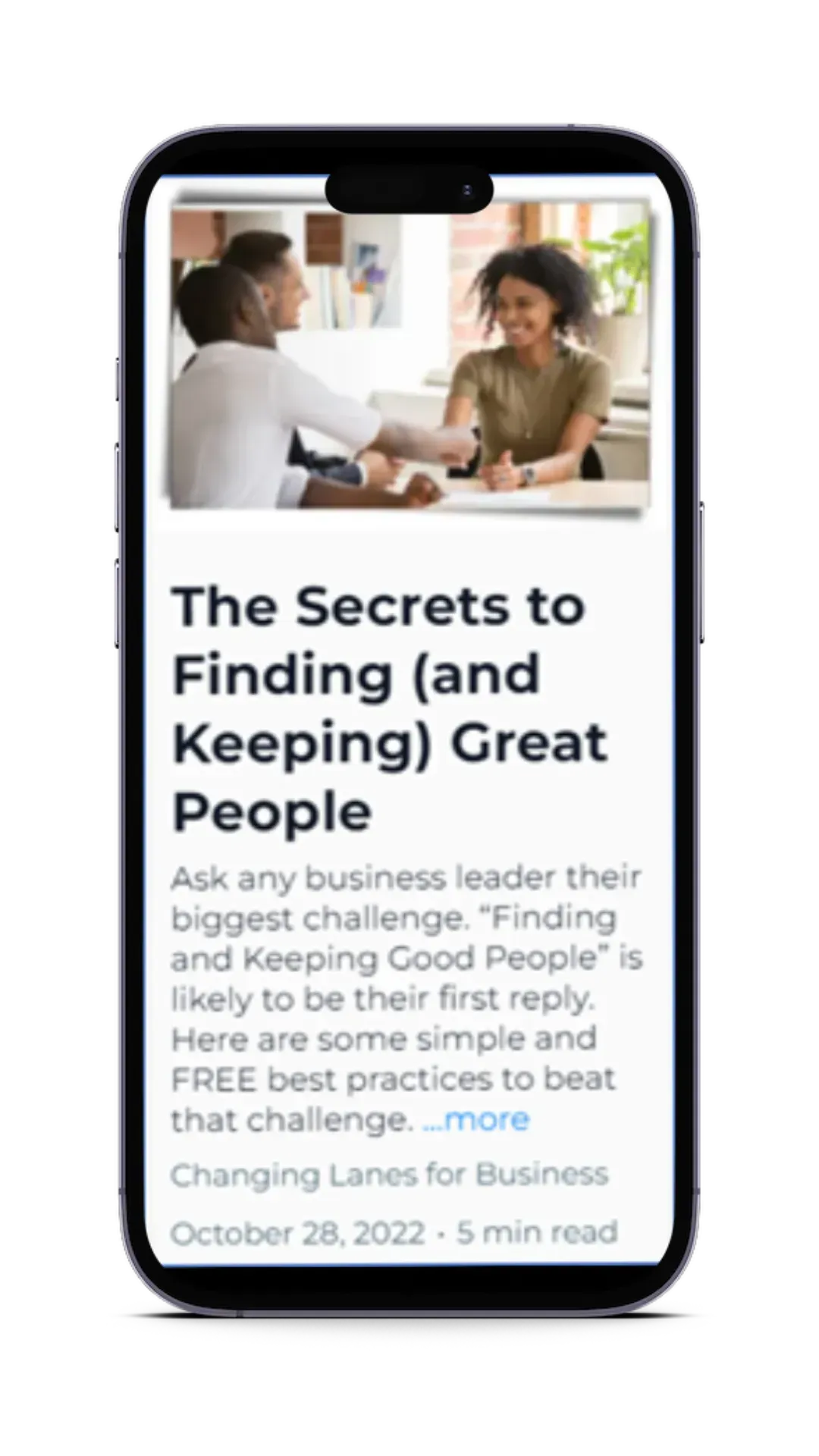443-324-0580
The Changing Lanes Newsletter
Weekly insight and inspiration to accelerate progress and increase the value of your business.

#26 - Leading Yourself
Eight tips for leading yourself well. Your success, your self-worth, and your future depend on it. ...more
Changing Lanes for Business ,Business Leadership &Make Your Business Better
February 08, 2025•4 min read

Throw the List Away
The benefits of productivity; the biggest barriers; and two proven solutions to help YOU achieve what matters most. ...more
Changing Lanes for Business
May 29, 2024•5 min read

#29 - The FOCUS Exercise for Business Leaders:
Focus is essential for successful leaders. Here is a simple exercise to focus your intentions and priorities for improving productivity and leadership skills. ...more
Changing Lanes for Business
January 01, 2024•3 min read

PRIORITY and FOCUS
“Three times this week the importance of priority and focus has been the topic of messages I’ve received. I think the teachers are trying to reach me… Here’s what I heard and what I’m doing about ... ...more
Changing Lanes for Business
November 04, 2023•6 min read

3 Inspiring Quotes that Redefine Leadership and Change…
Imagine finding a few words of wisdom that could reshape your business journey. Here are three profound quotes that aren't just about leadership, but about challenging your perspective and inspiring t... ...more
Changing Lanes for Business
October 28, 2023•3 min read

3 Enemies of Achievement... You Can Beat Them Now!
Achievement has many enemies that never sleep. Here are three of the biggest demons and what you can do to beat them now. ...more
Changing Lanes for Business
October 05, 2023•8 min read

Breakout as a Leader! 7 Vital Traits You Can Improve Now - to Succeed
You deserve to be your best. And the world deserves the very best you have to bring. Improve any of these traits to drive your success and excel as a leader. ...more
Changing Lanes for Business
September 27, 2023•6 min read

One Word is the Key to Great Communication
At the Root of Every Problem is Poor Communication. The key to being a great communicator can be summed-up in one word: Consideration ...more
Changing Lanes for Business
May 01, 2023•6 min read

The Key to Building Confidence
Confidence is an important trait for business leaders that helps you achieve goals and succeed in all aspects of life. It's rooted in believing in yourself and your ability to handle whatever comes yo... ...more
Changing Lanes for Business
April 10, 2023•4 min read

Why Subscribe?
By joining the newsletter community, you'll gain exclusive access to:
Latest Business Trends: Stay informed about the latest developments and trends in the business world.
Expert Insights: Receive expert advice and insights from Tim Rhode, tailored for ambitious business leaders like you.
Success Stories: Get inspired by real-life success stories of businesses that have thrived by embracing change.
Special Offers: Enjoy early access to our programs, workshops, and exclusive discounts.
Tips and Strategies: Weekly tips and strategies that you can apply directly to your business for immediate impact.
Ready For Change?
Are you ready for change & growth in your business? My 'Changing Lanes for Business' Coaching Program offers the tools and support you need to excel. Learn, grow, and lead your business to new heights with the right expert guidance today.


